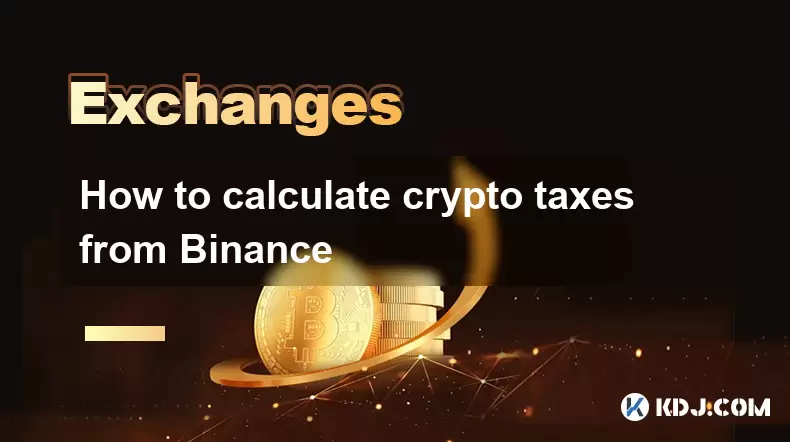-
 Bitcoin
Bitcoin $117500
2.15% -
 Ethereum
Ethereum $3911
6.19% -
 XRP
XRP $3.316
10.79% -
 Tether USDt
Tether USDt $1.000
0.01% -
 BNB
BNB $787.2
2.24% -
 Solana
Solana $175.2
4.15% -
 USDC
USDC $0.9999
0.00% -
 Dogecoin
Dogecoin $0.2225
8.40% -
 TRON
TRON $0.3383
0.28% -
 Cardano
Cardano $0.7868
6.02% -
 Stellar
Stellar $0.4382
9.34% -
 Hyperliquid
Hyperliquid $40.92
7.56% -
 Sui
Sui $3.764
7.63% -
 Chainlink
Chainlink $18.48
10.66% -
 Bitcoin Cash
Bitcoin Cash $582.1
1.88% -
 Hedera
Hedera $0.2601
6.30% -
 Avalanche
Avalanche $23.33
4.94% -
 Ethena USDe
Ethena USDe $1.001
0.02% -
 Litecoin
Litecoin $122.3
2.04% -
 UNUS SED LEO
UNUS SED LEO $8.969
-0.27% -
 Toncoin
Toncoin $3.339
0.86% -
 Shiba Inu
Shiba Inu $0.00001287
4.30% -
 Uniswap
Uniswap $10.43
7.38% -
 Polkadot
Polkadot $3.861
5.08% -
 Dai
Dai $1.000
0.02% -
 Bitget Token
Bitget Token $4.513
3.41% -
 Monero
Monero $267.7
-6.18% -
 Cronos
Cronos $0.1499
4.14% -
 Pepe
Pepe $0.00001110
5.15% -
 Aave
Aave $284.9
8.28%
Does Binance fiat currency trading support Alipay? Will the card be frozen?
Binance does not support Alipay for fiat trading; use bank transfers or cards instead. Check your bank's crypto policy to avoid card freezing.
May 17, 2025 at 06:15 pm

Does Binance fiat currency trading support Alipay? Will the card be frozen?
Binance, one of the world's leading cryptocurrency exchanges, offers a variety of payment methods for users to buy and sell cryptocurrencies using fiat currencies. One of the most commonly asked questions is whether Binance supports Alipay for fiat currency trading and what the implications are for the user's payment methods, such as whether their card might be frozen. In this article, we will explore these questions in detail.
Understanding Binance Fiat Currency Trading
Binance provides multiple avenues for users to engage in fiat currency trading. This means that users can deposit fiat currencies such as USD, EUR, and others directly into their Binance account and then use these funds to purchase cryptocurrencies. The platform supports various payment methods, including bank transfers, credit/debit cards, and certain e-wallets. The availability of these methods can vary based on the user's location.
Does Binance Support Alipay for Fiat Currency Trading?
When it comes to Alipay, the situation is a bit more complex. As of the latest updates, Binance does not directly support Alipay for fiat currency trading. This means that users cannot directly deposit funds into their Binance account using Alipay. Instead, Binance offers other e-wallet options such as Simplex and Paxos, which might be available depending on your region.
For users in regions where Alipay is a popular payment method, this can be a limitation. However, there are workarounds. Some users opt to convert their funds from Alipay to another payment method that is supported by Binance, such as a bank transfer or a credit/debit card, before depositing them into their Binance account.
Will Your Card Be Frozen When Using Binance?
The concern about card freezing when using Binance is a common one, especially among users who are new to cryptocurrency trading. The possibility of a card being frozen largely depends on the policies of the bank or financial institution that issued the card. Some banks and financial institutions have strict policies regarding cryptocurrency transactions due to the perceived risks associated with them.
- Check your bank's policy: Before using your card on Binance, it is crucial to review your bank's stance on cryptocurrency transactions. Some banks might flag or freeze accounts if they detect transactions related to cryptocurrency exchanges.
- Use a dedicated card: Some users opt to use a separate card for cryptocurrency transactions to minimize the risk of their primary card being affected.
- Communicate with your bank: Informing your bank about your intention to use your card for cryptocurrency transactions can sometimes help mitigate the risk of your card being frozen. Banks are more likely to be cooperative if they are aware of your activities.
Steps to Use a Card on Binance
If you decide to use a card for fiat currency trading on Binance, here are the detailed steps you need to follow:
- Log into your Binance account: Ensure you are logged into your Binance account with your credentials.
- Navigate to the 'Buy Crypto' section: On the top menu, click on 'Buy Crypto' and then select 'Credit/Debit Card'.
- Select your currency and cryptocurrency: Choose the fiat currency you want to use and the cryptocurrency you wish to purchase.
- Enter the amount: Specify the amount of cryptocurrency you want to buy. The platform will automatically calculate the equivalent amount in your chosen fiat currency.
- Enter your card details: Fill in your card information, including the card number, expiration date, and CVV code.
- Complete the transaction: Follow the prompts to complete the transaction. You may need to verify your identity if it's your first time using the card on Binance.
Alternative Payment Methods on Binance
Since Alipay is not supported, it's important to explore other payment methods available on Binance. Here are some alternatives:
- Bank Transfer: Binance supports bank transfers in various currencies. This method is often preferred for larger transactions due to lower fees compared to card payments.
- P2P Trading: Binance's P2P (peer-to-peer) trading platform allows users to buy and sell cryptocurrencies directly with other users using various payment methods, including bank transfers and certain e-wallets.
- Third-Party Services: Services like Simplex and Paxos are integrated into Binance and can be used to buy cryptocurrencies with credit/debit cards or other payment methods.
Security Measures When Using Binance
When engaging in fiat currency trading on Binance, it's essential to consider the security measures in place to protect your funds and personal information.
- Two-Factor Authentication (2FA): Enable 2FA on your Binance account to add an extra layer of security. This can prevent unauthorized access to your account.
- Use Strong Passwords: Ensure your Binance account password is strong and unique. Avoid using easily guessable passwords.
- Monitor Your Account: Regularly check your account activity and transaction history to detect any suspicious activities early.
- Secure Your Payment Methods: When using cards or bank transfers, ensure that your payment methods are secure and that you are using trusted devices and networks.
Frequently Asked Questions
Q: Can I use Alipay to buy cryptocurrencies on Binance through a third-party service?
A: While Binance does not directly support Alipay, some users have reported using third-party services to convert their Alipay funds to a supported payment method before depositing them into Binance. However, this method involves additional steps and potential fees, so it's important to research and understand the process thoroughly.
Q: What should I do if my card gets frozen after using it on Binance?
A: If your card gets frozen, the first step is to contact your bank or card issuer to understand why it was frozen and what steps you can take to unfreeze it. Providing them with transaction details and explaining that the transactions were legitimate can sometimes help resolve the issue.
Q: Are there any fees associated with using a card for fiat currency trading on Binance?
A: Yes, using a card for fiat currency trading on Binance typically involves fees. These fees can vary depending on the card issuer and the specific service used (such as Simplex or Paxos). It's important to review the fee structure before proceeding with a transaction.
Q: Can I withdraw fiat currency from Binance to my Alipay account?
A: As of the latest updates, Binance does not support direct withdrawals to Alipay. Users looking to withdraw fiat currency will need to use supported methods such as bank transfers or other e-wallets that Binance supports.
Disclaimer:info@kdj.com
The information provided is not trading advice. kdj.com does not assume any responsibility for any investments made based on the information provided in this article. Cryptocurrencies are highly volatile and it is highly recommended that you invest with caution after thorough research!
If you believe that the content used on this website infringes your copyright, please contact us immediately (info@kdj.com) and we will delete it promptly.
- Tron's Sell-Off Spurs Altcoin Shift: What's Next for TRX?
- 2025-08-08 08:30:12
- RUVI Presale: Is the Growth Potential Real?
- 2025-08-08 09:10:12
- Sleep Token's US Takeover: Thornhill Rides the 'Even In Arcadia' Wave
- 2025-08-08 08:30:12
- FTT Token's Wild Ride: Creditor Repayments vs. Market Drop - A New Yorker's Take
- 2025-08-08 07:10:12
- Floki Crypto Price Prediction: Riding the Robinhood Rocket or Just a Meme?
- 2025-08-08 07:15:12
- EigenLayer, Restaking, and Ethereum: Navigating the Hype and the Hazards
- 2025-08-08 06:30:12
Related knowledge

How to use margin trading on Poloniex
Aug 08,2025 at 09:50am
Understanding Margin Trading on Poloniex

How to use advanced trading on Gemini
Aug 08,2025 at 04:07am
Understanding Advanced Trading on GeminiAdvanced trading on Gemini refers to a suite of tools and order types designed for experienced traders who wan...

How to deposit USD on Bitstamp
Aug 07,2025 at 05:18pm
Understanding Bitstamp and USD DepositsBitstamp is one of the longest-standing cryptocurrency exchanges in the industry, offering users the ability to...

How to use the Kraken Pro interface
Aug 08,2025 at 09:57am
Understanding the Kraken Pro Interface LayoutThe Kraken Pro interface is designed for both novice and experienced traders seeking a streamlined experi...

How to find my transaction ID on Gemini
Aug 08,2025 at 12:50am
Understanding the Transaction ID in Cryptocurrency ExchangesA transaction ID (TXID) is a unique alphanumeric string that identifies a specific transfe...

How to calculate crypto taxes from Binance
Aug 08,2025 at 07:56am
Understanding Cryptocurrency Taxation on BinanceCalculating crypto taxes from Binance requires a clear understanding of how tax authorities classify d...

How to use margin trading on Poloniex
Aug 08,2025 at 09:50am
Understanding Margin Trading on Poloniex

How to use advanced trading on Gemini
Aug 08,2025 at 04:07am
Understanding Advanced Trading on GeminiAdvanced trading on Gemini refers to a suite of tools and order types designed for experienced traders who wan...

How to deposit USD on Bitstamp
Aug 07,2025 at 05:18pm
Understanding Bitstamp and USD DepositsBitstamp is one of the longest-standing cryptocurrency exchanges in the industry, offering users the ability to...

How to use the Kraken Pro interface
Aug 08,2025 at 09:57am
Understanding the Kraken Pro Interface LayoutThe Kraken Pro interface is designed for both novice and experienced traders seeking a streamlined experi...

How to find my transaction ID on Gemini
Aug 08,2025 at 12:50am
Understanding the Transaction ID in Cryptocurrency ExchangesA transaction ID (TXID) is a unique alphanumeric string that identifies a specific transfe...

How to calculate crypto taxes from Binance
Aug 08,2025 at 07:56am
Understanding Cryptocurrency Taxation on BinanceCalculating crypto taxes from Binance requires a clear understanding of how tax authorities classify d...
See all articles

























































































